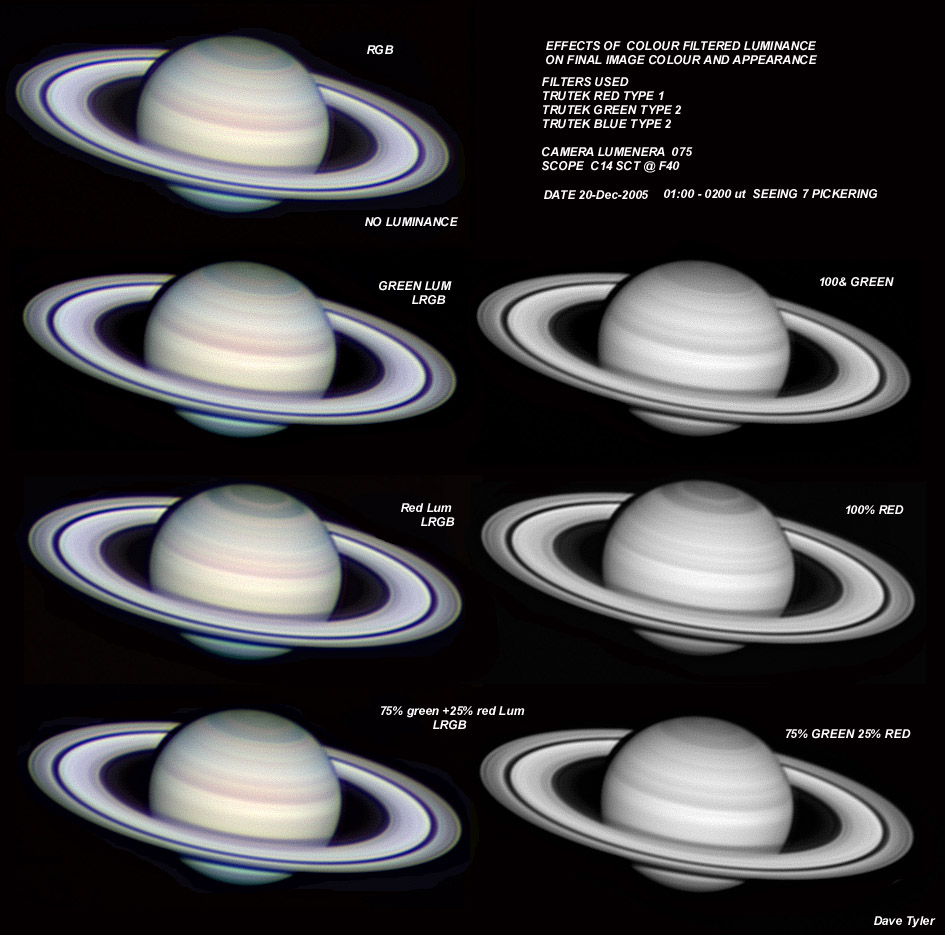Saturn’s appearance changes when using luminance layers obtained with red and green filters.
This is a one off case study using images captured on the 20 December 2005 in very good seeing.
The aim of this experiment, in the absence of a sharp white light image or a really good blue image, was to see which filter or combination of the red or green filtered images, produced a final LRGB colour, closest to the RGB image.
| 1. | The differences are subtle but well worth being aware of when adding a Luminance layer |
| 2. | The green filtered Luminance brings the final colours of the LRGB, very close indeed to the RGB image colours. |
| 3. | When the red filter is used alone, it displays differences in the South Polar Regions, to those of the RGB image, but the different fine detail revealed all over the planet’s globe is interesting in it’s own right. I feel this makes the red L RGB, worthy of separate presentation. |
| 4. | I felt that using a combination of the red and green filtered images in the ratio of 75green to 25 red, gave the a final LRGB a colours and intensity of colours closest to the RGB image. |
This one off case was obtained in very good seeing, that is quite unusual here in the UK. It suggests to me that a most honest LRGB colour, when compared to the "RGB only" colour, is obtained by the above combination of filters.
The "red alone" luminance layer addition, also has merit, as it may well reveal fine detail not so well seen in a "truer visually balanced" LRGB.
I must add that normally, the only point of adding a luminance in the first place, is to increase the sharpness of the image that may have been softened by a poor blue component in the RGB. However, the adding of a red Luminance as part of an observation set does bring an "extra viewpoint" to the observation. I must see what adding a blue luminance will reveal, if I can find one good enough !
